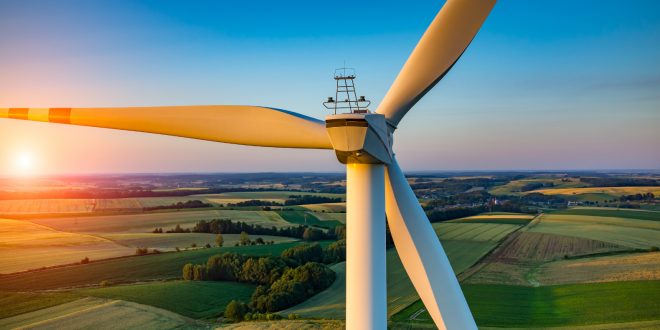Wind power is one of the largest sources of clean, renewable energy in the United States, and it’s only going to keep growing. By 2030, wind power is expected to produce 20% of the U.S. electricity demand and cost less than fossil fuels. With wind already making its way into the mainstream energy grid, it’s time to explore how wind can power your home and whether it’s right for you.
How do residential turbines work?
Wind turbines take kinetic energy from the wind and convert it into electricity with zero emissions. Check out the steps for this clean energy process below:
- Wind’s kinetic energy causes the blades of the turbine to spin.
- The blades’ movement drives a rotor in the turbine.
- The spinning rotor powers a generator that produces electricity with no carbon emissions.
- An inverter converts the electricity to an appropriate voltage for your home.
- For grid tied homes, electricity is used to power your house and anything extra can be sold back to the power grid.
- For homes not tied to the grid, the electricity powers your home and can also be stored in batteries.
What it Takes and Costs to Power your Home with Wind Energy
Electricity consumption for an average U.S. household is about 877-911 kilowatt-hours. Depending on wind speeds in your area, a wind turbine rated for 5 to 15 kilowatts would meet this need. Determine if your property gets enough wind using this map!
Not all properties have adequate wind speeds or space to power an entire household. You can still benefit from wind by using a small wind turbine that is mounted on a roof. The clean energy generated by a small turbine can help offset the energy from a few household appliances and even lower your electricity bill by 90%.
While residential wind turbines can save you money on your utility bill, they do have a hefty upfront cost. See the price ranges below for a small and large home wind turbine:
- 1 kW Small roof-mounted turbine: up to $7,000
- 100 kW free-standing turbine: up to $80,000
PACE programs can be used to help finance a home investment into wind energy, so check to see if one is available in your area.
Pros and Cons of Residential Wind Power
All forms of energy have their pros and cons. Wind’s benefits as a clean, cost-effective, and renewable energy may outweigh it’s cons of high initial investment, inconsistency, and noise/visual pollution.
Pros
- Clean Electricity: Wind can generate electricity without emitting harmful greenhouse gases like carbon dioxide or particulate pollution like ash.
- Cost-effective: As a freely existing resource, it costs nothing to harness the power of the wind, and it can save you money on your electricity bill. It is also becoming cheaper to use than solar and fossil fuels.
- Sustainable: Unlike fossil fuels, wind doesn’t take thousands of years to replenish. It is a renewable resource that can’t be depleted.
Cons
- High initial investment: Investing in wind power for your home requires a large sum of money to purchase and install your equipment. However, maintenance costs are low and wind is free to use.
- Inconsistency: Wind is naturally occurring and renewable, but it can also be inconsistent with speed and presence. Storing excess wind energy in batteries or using a hybrid wind and solar system can remedy this con.
- Noise/visual pollution: Turbines make loud noise thanks to the spinning blades, and many don’t like the sight of turbines themselves. They can be considered a form of sensory pollution, but this is based on personal preference.
When deciding whether wind power is right for you it’s important to do the research and compare the pros and cons. For a helpful visual about wind power for the home, check out the infographic below.




